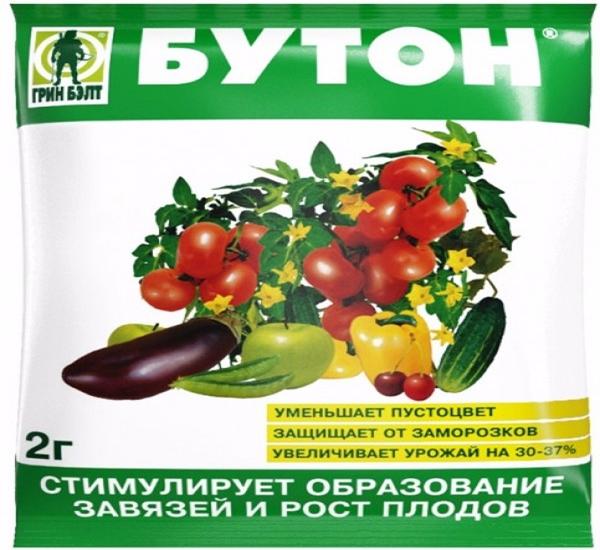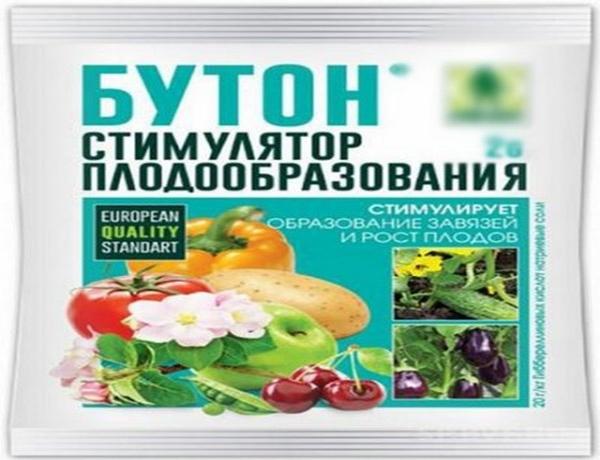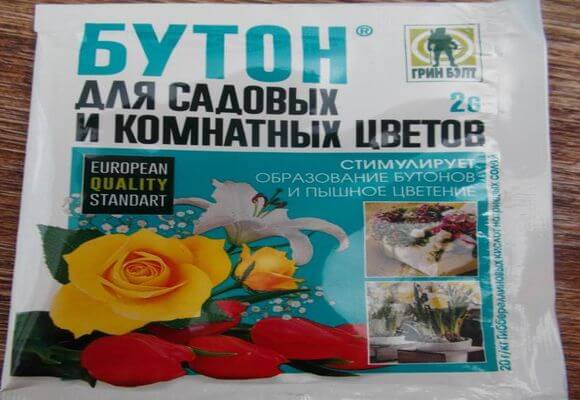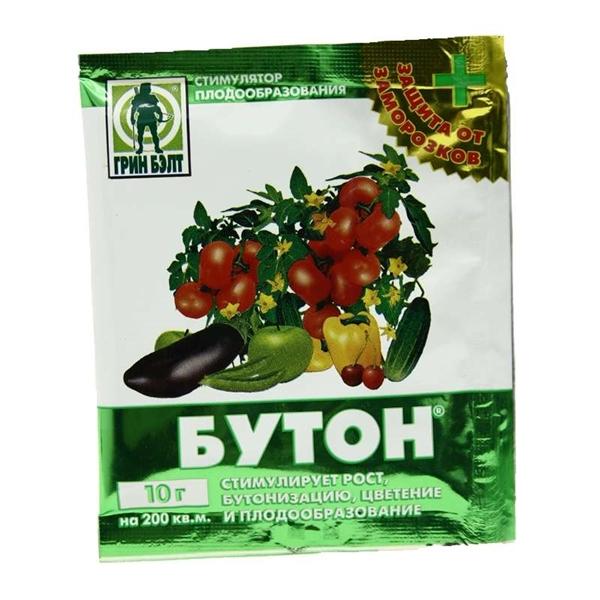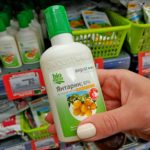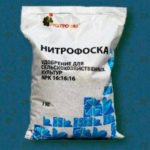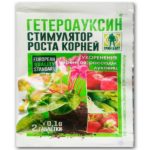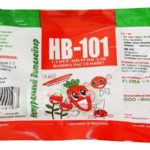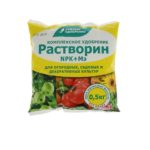Having planted vegetable and fruit crops in the garden, gardeners plan to reap a rich harvest. However, they are faced with a situation when, instead of ovaries, barren flowers appear on the bushes, and the fruits, before they have time to form, fall from the plants. To prevent this problem, experienced gardeners recommend using growth stimulants. "Bud" - a domestic drug, has many advantages, thanks to which it is often used by gardeners on their plots.
Composition of the drug "Bud"
The growth stimulator called “Bud” contains active components that help increase the number of ovaries on one bush and reduce the number of barren flowers, accelerate the ripening of fruits and prevent the ovaries from falling off. In addition, thanks to the complex of active components, the survival rate of seedlings in open ground and greenhouses and the germination of seed material, as well as plant resistance to pathogens and insect pests, increase.
The chemical contains sodium salt of gibberellic acids, which promotes fruit formation and active growth of berries and vegetables, as well as ornamental plants. 1 kilogram of the drug contains 20 grams of active substance. In addition, the chemical contains potassium humate and a set of elements necessary for crops - boron, manganese and copper, as well as polysaccharides and vitamins.
Release form and principle of operation
The stimulant goes on sale in the form of a powder, which is packaged for ease of use in paper bags of 2 and 10 grams. The active component of the chemical agent, penetrating into plants and seeds, activates the vital forces of the crop and promotes accelerated growth and an increase in the number of ovaries. There are two varieties of “Bud” on store shelves - intended for spraying indoor and garden ornamental plants and for processing fruit crops; depending on the need, one or another option is purchased.
Growth hormone obtained artificially increases productivity, stimulates the germination of even old seed material and reduces the time of fruit ripening, which is especially important in regions with short summers.
Purpose of a growth stimulant
The manufacturer's instructions indicate in which cases it is advisable to use a growth stimulator. It is used for:
- intensive growth of green mass of indoor plants and improvement of the quality of buds;
- increasing the quantity of harvested crops and improving the quality of harvested fruits;
- accelerating the germination of seeds of cultivated plants and improving the survival rate of seedlings after planting in open ground;
- reducing the formation of barren flowers on fruit crops, reducing the risk of developing diseases;
- increasing plant resistance to cold, damp weather and extreme heat.
Since the drug is a natural stimulant, it does not harm cultivated plants and does not pollute the soil on the site.
Instructions for use
The instructions for the chemical product indicate the recommended dosages and rules for using the fertilizer.
For vegetables
For each variety of vegetable crop there is its own growth stimulator standard, which must be adhered to:
- White and cauliflower cabbage. 15 grams of powder are dissolved in 10 liters of water and the culture is treated three times. White cabbage - when the first true leaf appears, when 6-7 leaves are formed and when the head is set. Colored - at the moment of formation of 5-6 leaves, at the beginning of the formation of the head and when the leaves close above the head. 4 liters of working fluid are used per hundred square meters.
- Tomatoes and eggplants. For 10 liters of settled water, use 15 grams of the drug. Tomatoes are treated at the flowering stage of the first cluster, second and third cluster; a total of three sprayings are necessary. The little blue ones are treated twice - at the time of budding and at the flowering stage. For one hundred square meters of garden use 4 liters of working solution.
- Potato.Treated before planting in open ground. 5 grams of the chemical are dissolved in 3 liters of water; 50 kg of planting material will require a liter of working fluid.
- Legumes. Treat twice during the growing season - at the time of budding and flowering. 10 grams of the drug are diluted in 10 liters; 4 liters of working fluid are needed per hundred square meters.
For garden shrubs and fruit trees
The chemical is also used to treat garden berries and fruit trees. The stimulator is used according to the following scheme:
- Strawberries, strawberries and currants. Dissolve 10 grams of powder in 10 liters of clean, settled water; use 4 liters of liquid per hundred square meters (or pour 0.5 liters of solution under a currant bush). Treatments are carried out 2-3 times a season, depending on the condition of the cultivated plants. The first is at the flowering stage, the second and third are at intervals of a week.
- Fruit trees (apple, apricot and others). For 10 liters of water you will need 10 grams of stimulant. Water the trees three times a season, using 1 liter of working fluid per adult plant - at the flowering stage, after it and during the formation of ovaries.
Other Applications
A 10-liter container of clean, settled water will require 2 grams of powder. Plants are sprayed twice a season (the moment of bud formation and the flowering period). For 10 sq. meters of flower beds take 1 liter of working solution.
You can also soak flower bulbs in the stimulator before planting them in flower beds. One gram of growth hormone is diluted in 10 liters of settled or spring water and the planting material is kept in the solution for at least 5 hours.100 ml of working solution is enough to soak a kilogram of onions.
Precautionary measures
The domestic chemical belongs to the 3rd toxicity class and is of little danger to the gardener who sprays and beneficial insects, therefore it is allowed for use on personal plots. When contacting a chemical, adhere to basic safety requirements - use protective clothing, wash with soap and wash your clothes after finishing the treatment.
Terms and conditions of storage
The shelf life of the domestic chemical product is 2 years from the date of production. Keep the chemical in a dark utility room, out of reach of children.
Analogues of the product
If necessary, replace the stimulant drug by purchasing a product such as “Kornevin” or “Flodostim”.

